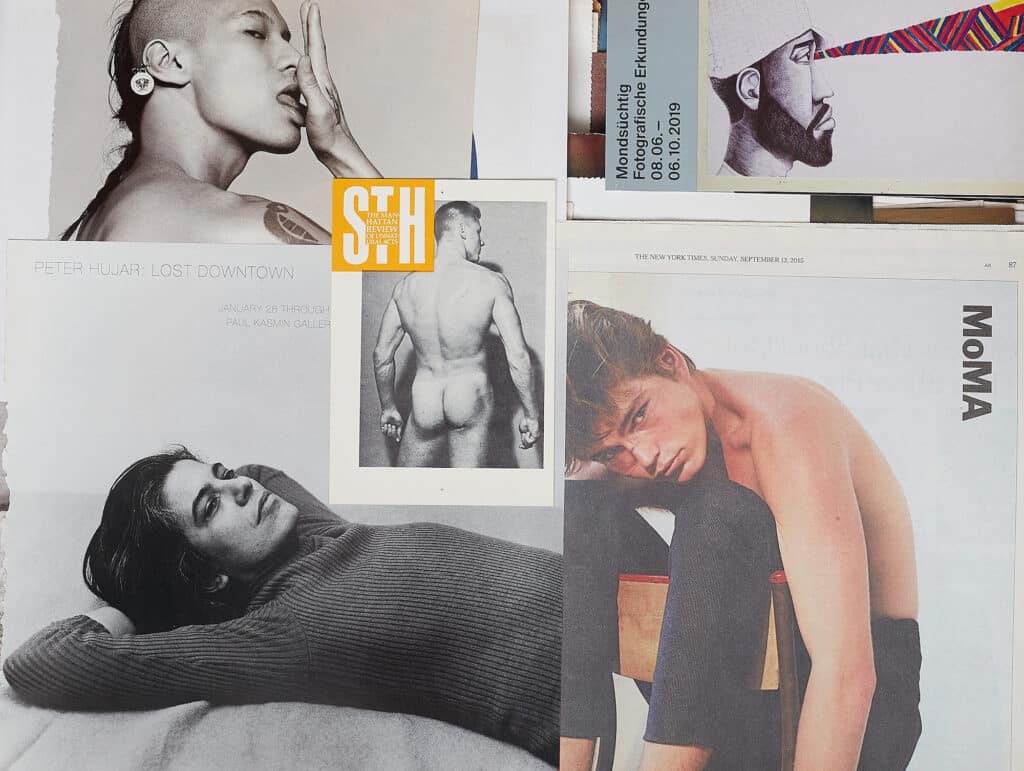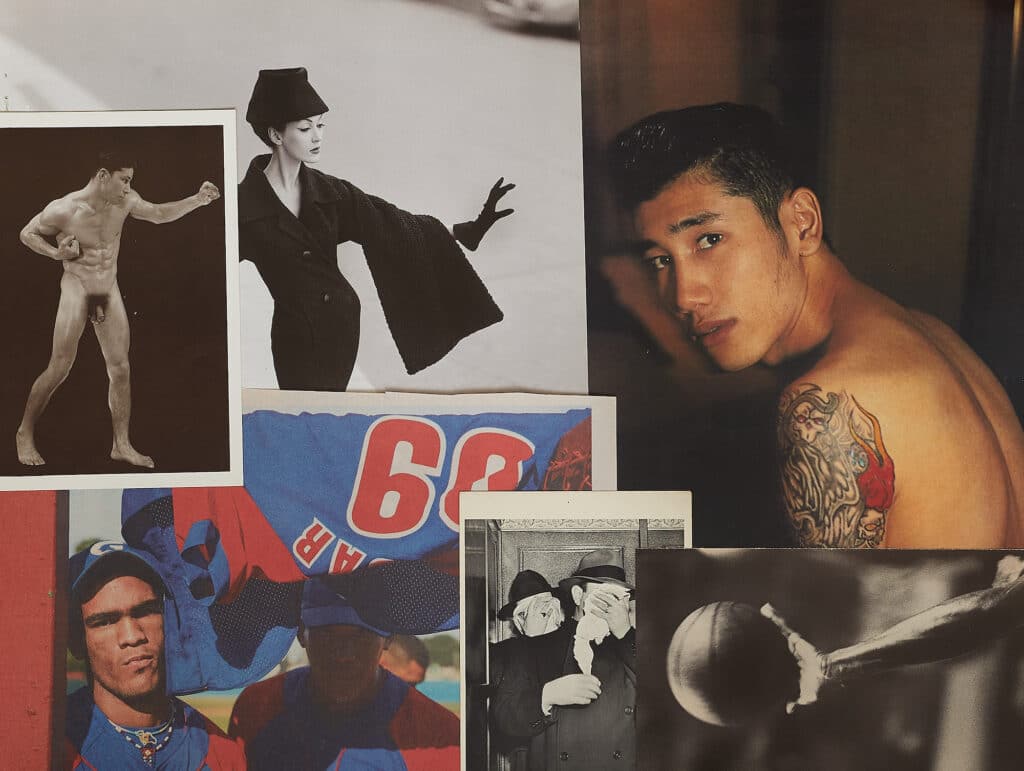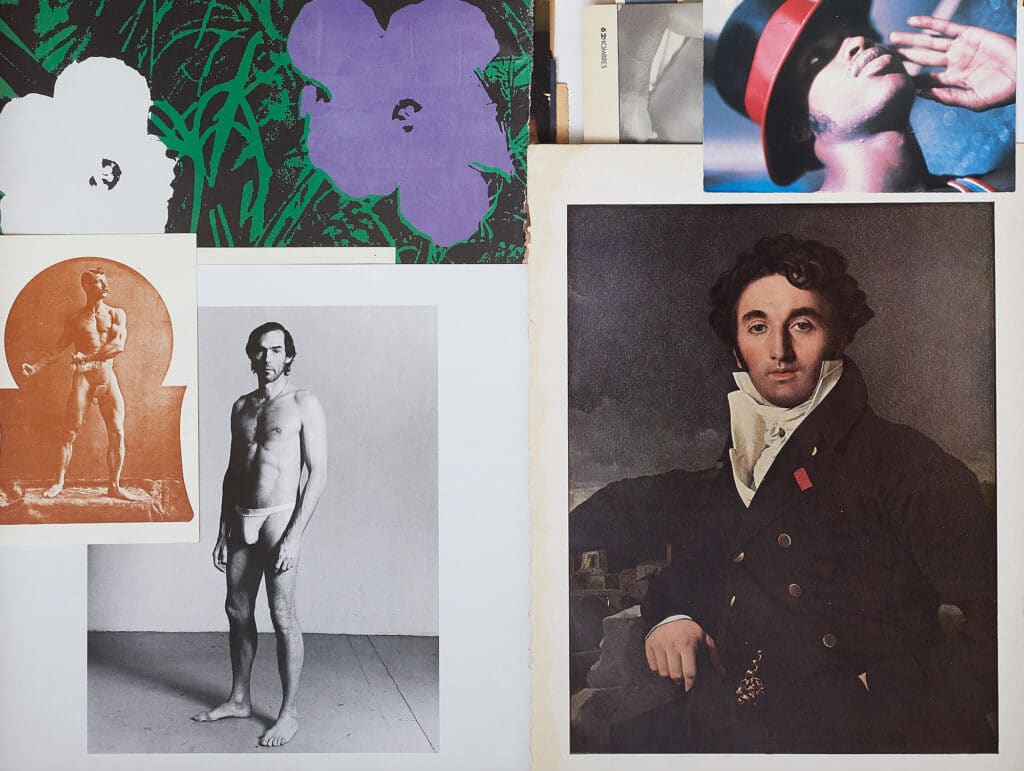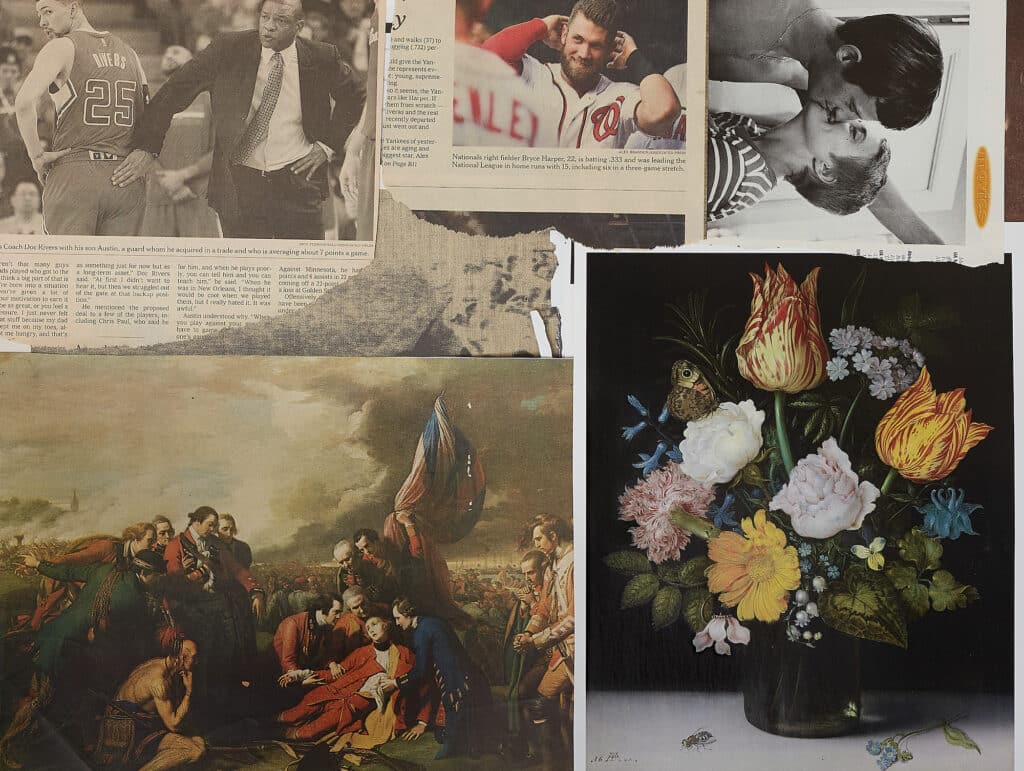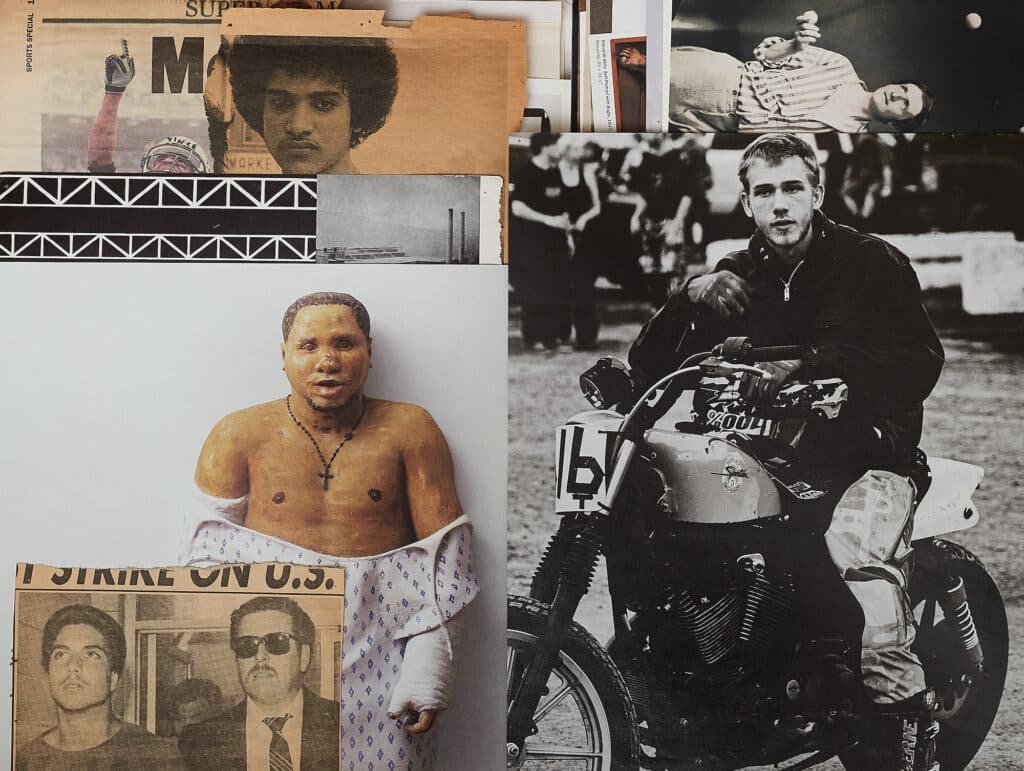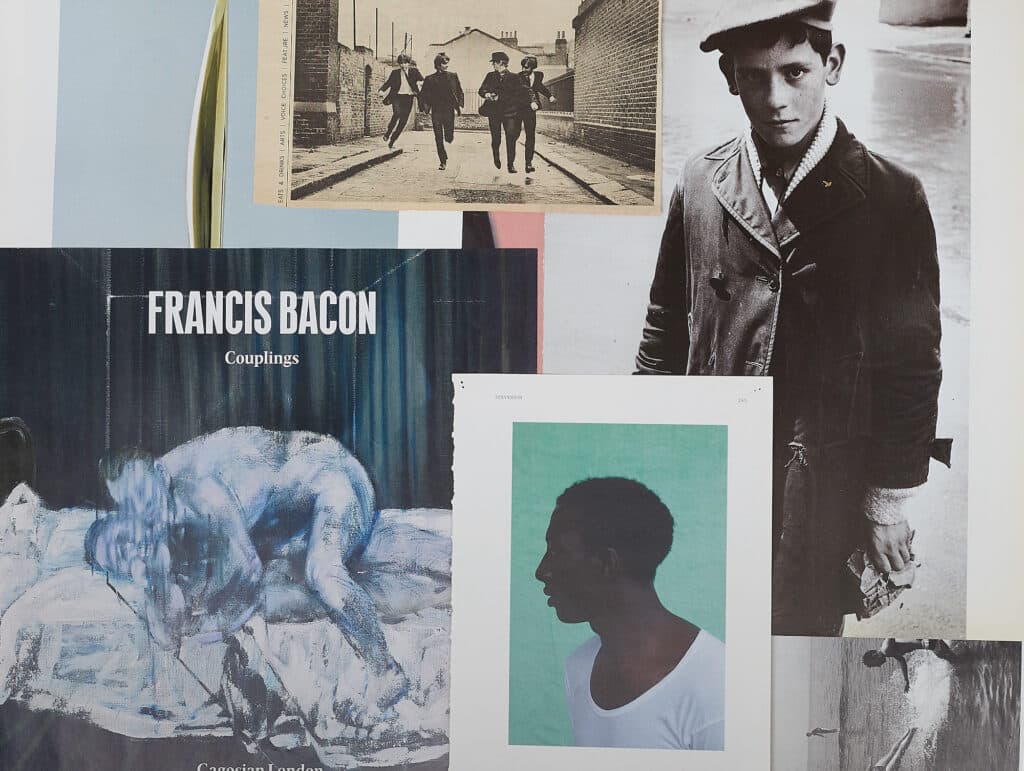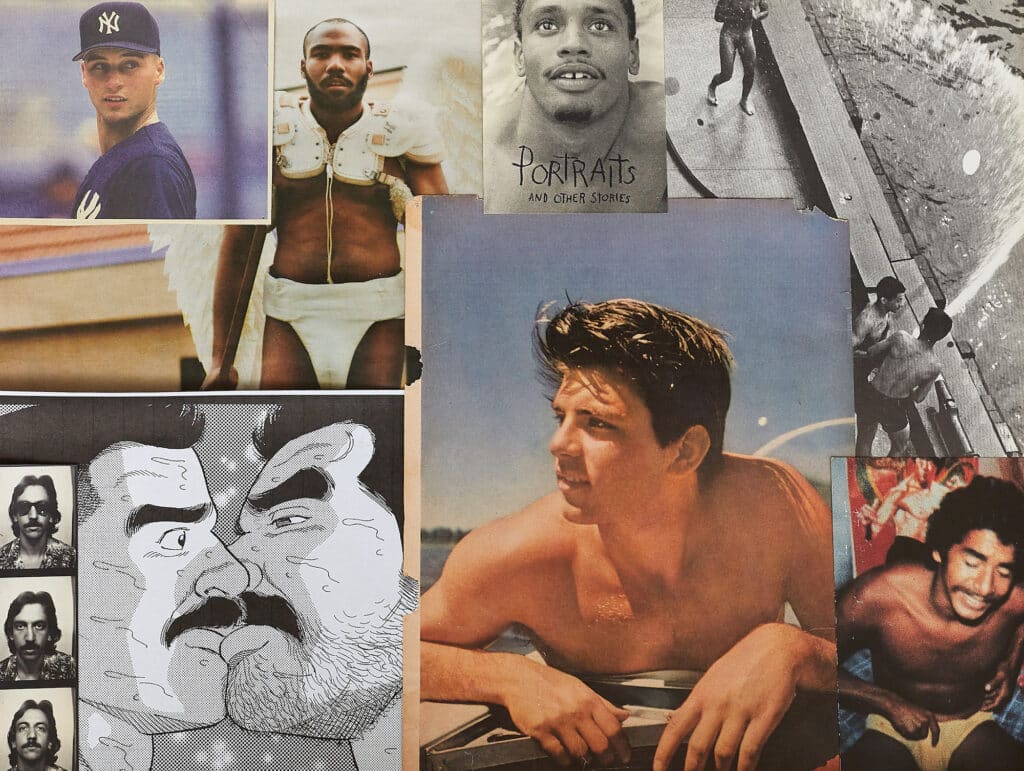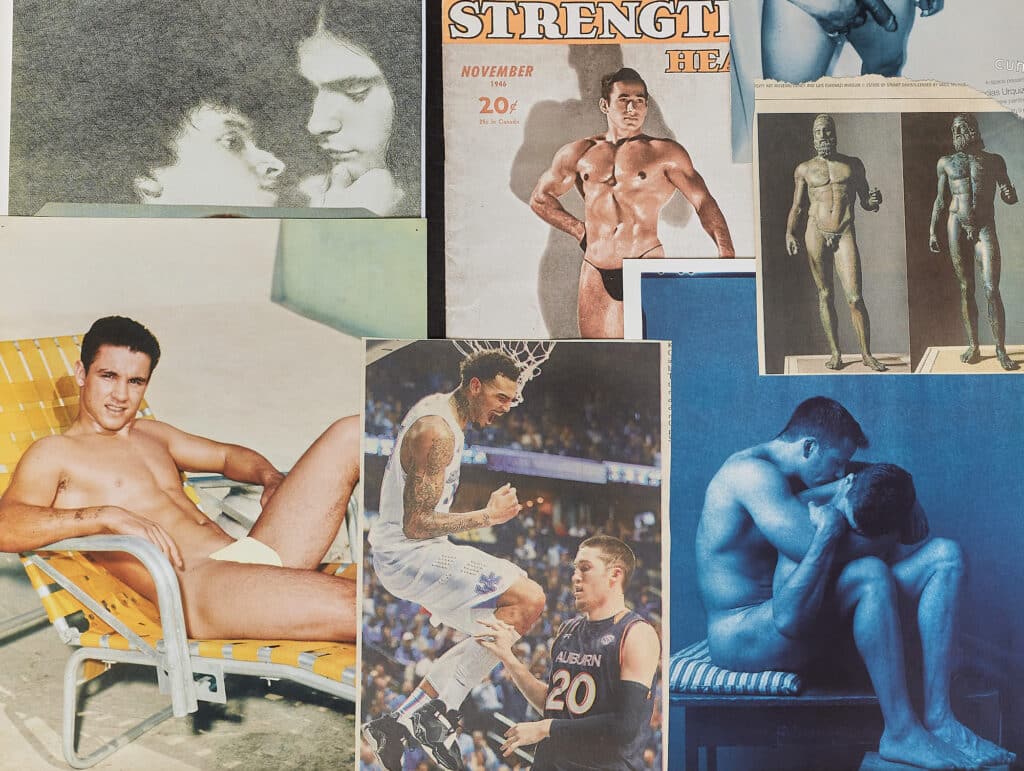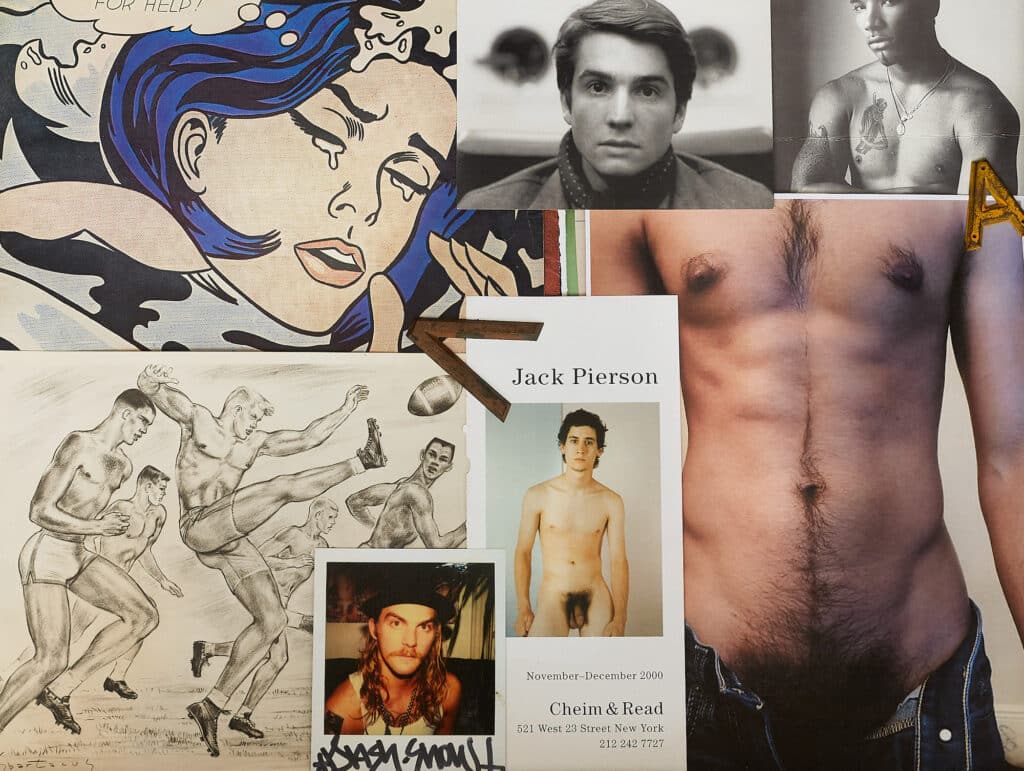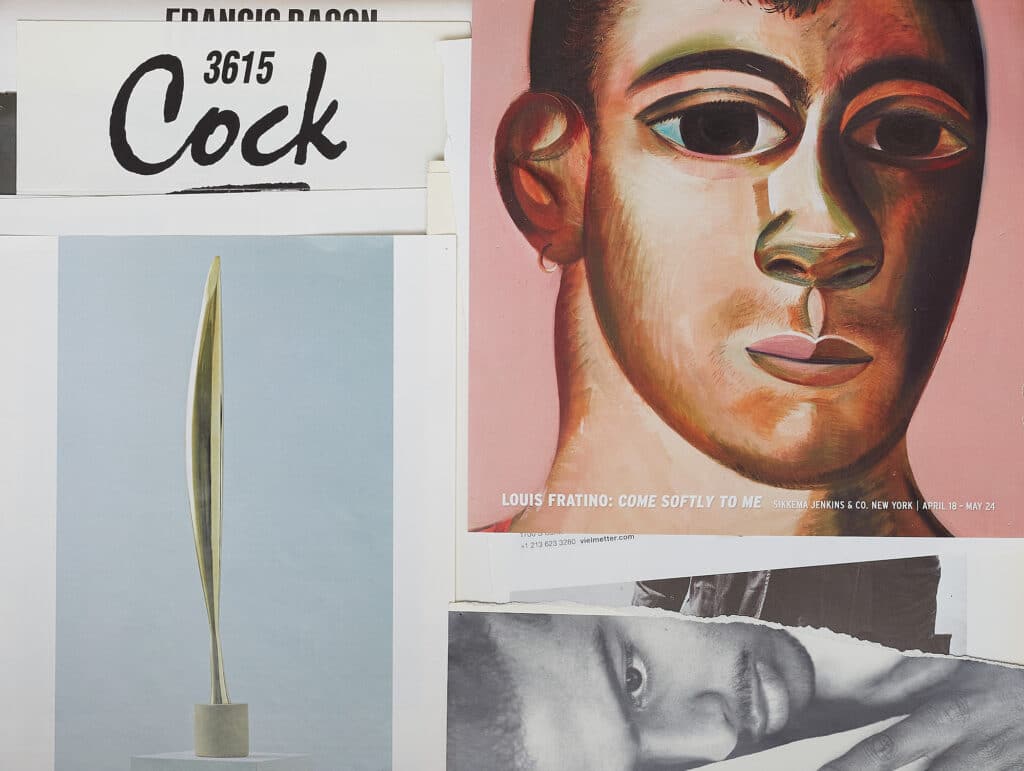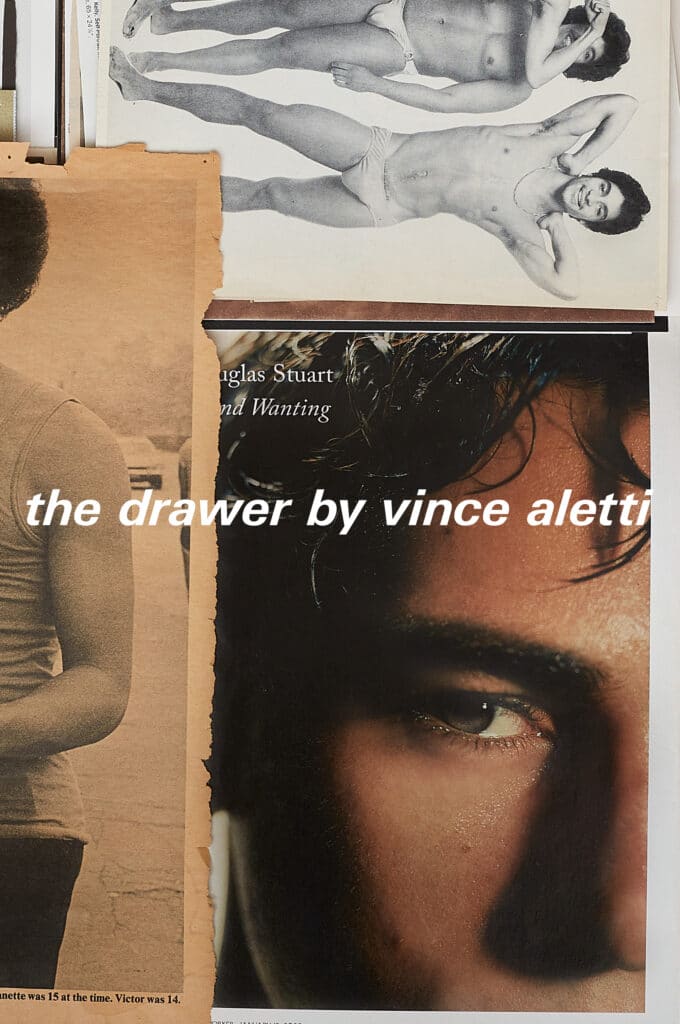At the age of 10, photo collector, curator, and critic Vince Aletti’s mother purchased a beachfront motel in Fort Lauderdale, Florida. The family left their home in a small town outside Philadelphia and relocated down South, but the experience left Aletti feeling uprooted and dislocated.
“I could live in the magazines”
He began subscribing to design magazines like House and Garden, his mind dreaming up rooms where he might one day live. Using the Eames House of Cards, Aletti began constructing spaces that he could decorate and soon brought them to life using cardboard boxes as rooms, each carefully staged with furniture and accessories fashioned by Aletti’s hand.
“And then I would burn them,” he says. “I would light them on fire and do another one. I don’t want to probe too deeply, but it does all tie together. I was creating interiors that were very private and very much my way of seeing things but also constantly knowing that there was no permanence. I kind of wanted it, but I didn’t need it. I could live in the magazines.”
A Time Capsule in the Making
Vince Aletti arrived in New York City in 1968, got a small apartment in the East Village for just $125 a month, and began to make it his home, bringing in his vinyl, book, and magazine collections and pinning favorite photographs to the walls. “I wasn’t at a place where I knew I could accumulate a lot of stuff so I would often tear out pages that I knew I wanted to look at and keep those in a box somewhere,” says Aletti.
Eight years later he moved into his current seven-room apartment, which allowed his passion for collecting to flourish. From those items that do not make the cut, Aletti may keep a magazine cover, ad, or tearsheet, a newspaper clipping, a publicity glossy film still, or a random bit of ephemera acquired over the years. Some of this ephemera once hung in the kitchen as part of a rotating installation on the walls and refrigerator and has since been retired to what is known as “The Drawer.”
In the living room, an oak filing cabinet is home to “The Drawer,” where Aletti lays the images in a flat file drawer and arranges them in intriguing juxtapositions that read as complete works in their own right. When new pictures come in, Aletti layers those atop the first so “The Drawer” becomes a time capsule waiting to be unearthed.
That day came one afternoon when Aletti teamed up with photographer Anushila Shaw to document the spreads he had assembled over the year for the new book, The Drawer (SPBH Editions). Featuring 75 spreads laid out across the 11 x 14.75 inch paperback book, The Drawer is a lavish affair that pays homage to the magnificent expanse of broadsheets in their prime.
Like buried treasure, the images from Aletti’s collection are priceless gems that spark memories of a beautiful, sexy, glamorous past when printed matter ruled the planet.
Our Shared Visual History
Created for the pure pleasure of looking, The Drawer is a love letter to the printed page, cherishing the sensuality and intimacy of its many forms. Each image has been preserved as a work of art unto itself, and when remixed into these masterful spreads they offer a window into our shared visual history through the lens of curator, collector, and critic Vince Aletti.
“What becomes a Legend most?” asks a vintage 1969 Blackglama ad featuring Lena Horne, arms open wide, palms facing out, teeth bared as she belts out a high note while rocking a luscious afro and full length fur coat. It’s a question that could be asked of each image Aletti has preserved and repurposed to intoxicating effect, as spread after spread whisks you into a reverie of things past.
There’s a wealth of men in various states of dress, their bodies flawless, their faces ranging from pretty to rugged, with an abundance of come hither eyes. They are found in classical painting, physique photography, fashion advertising, and sports reportage, woven together in delectable celebration of male beauty and sexuality.
There are personal and cultural memories embedded in these images. Readers may find themselves nodding in recognition at a shared passion for tearing a picture free from its binding and hanging it on the wall as a way to claim their space as an extension of themselves.
The True Original
Nearly a century ago, cultural critic Walter Benjamin published the 1935 essay, “The Work of Art in the Age of Mechanical Reproduction”, arguing that new forms of transmitting copies of an artwork devalued its aura, thereby jeopardizing its authority of the original.
“But the instant the criterion of authenticity ceases to be applicable to artistic production, the total function of art is reversed.”
Walter Benjamin
“For the first time in world history, mechanical reproduction emancipates the work of art from its parasitical dependence on ritual. To an ever greater degree the work of art reproduced becomes the work of art designed for reproducibility,” Benjamin wrote, predicting the coming tide of publicity and digital marketing.
“From a photographic negative, for example, one can make any number of prints; to ask for the ‘authentic’ print makes no sense,” he continues. “But the instant the criterion of authenticity ceases to be applicable to artistic production, the total function of art is reversed. Instead of being based on ritual, it begins to be based on another practice—politics.”
Although Benjamin failed to recognize the ritualistic nature of curating and decorating one’s personal space with printed images, Aletti does just this, reminding us that the power of mass reproduction lies in its ability to forge countless personal connections between people and the original work.
“The first time I saw Irving Penn or Richard Avedon was in a magazine so the reproduction counts a lot for me,” Aletti says. “There is a ton of Avedon in The Drawer because he is somebody that I appreciate so much on the page. For me it’s the opposite. I’m happy to see a print on the wall some time, but as far as I am concerned that page in Harper’s Bazaar is the original.”
Vince Aletti: The Drawer is published by SPBH Editions, $60

